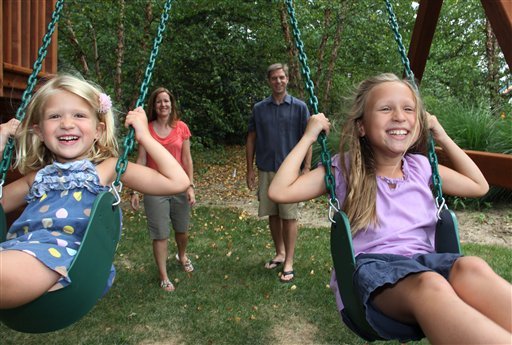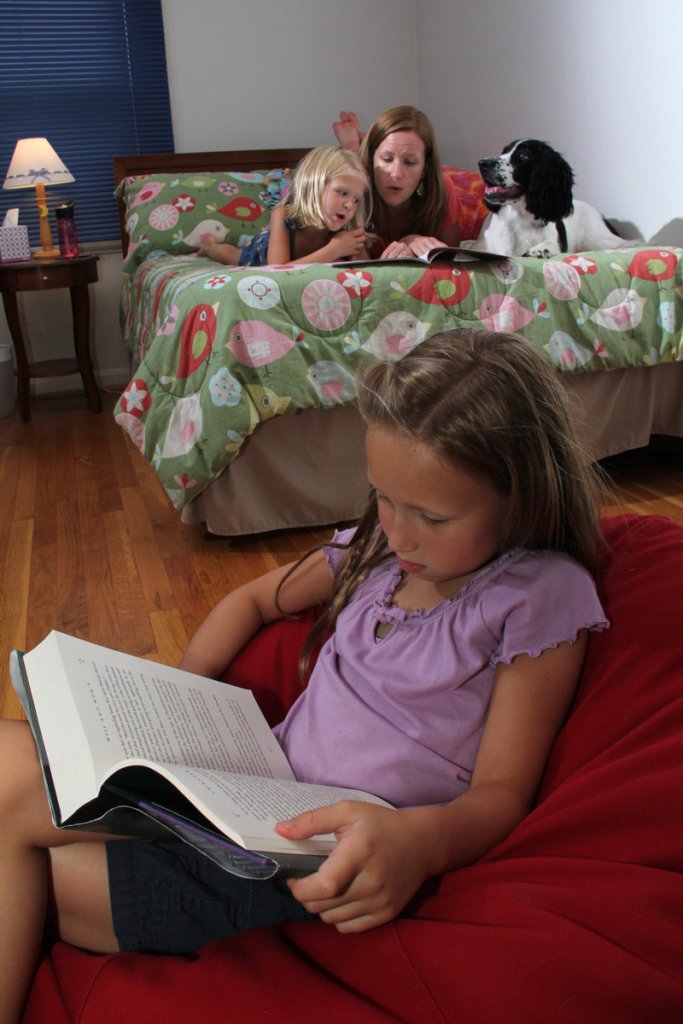For children, the excitement of moving into a new home is often clouded by uncertainty. Parents can ease the transition — starting at the dinner table.
The ritual of sitting down to a family meal can help kids start to feel at home, said Nancy Darling, a psychology professor at Oberlin College in Oberlin, Ohio. She also urges adherence to bedtimes.
“When kids feel like everything is changing, they need that stability,” she said. “They need attention and stability.”
That may mean anything from choosing familiar paint colors in the new house to letting kids be part of decorating decisions.
Barbara Miller, an interior designer in Portland, Ore., who has moved with her children three times, painted their new rooms the same color as their old ones.
“I try to keep things as much the same (as possible) — especially if they’re nervous,” said Miller.
Moving can be more disruptive for kids than parents realize, added Doug Tynan, a child psychologist with the Nemours Foundation in Newark, Del. Be prepared to handle tears or unusual behavior as children adjust, he said.
“Don’t take it personally if they walk into a wonderful new house and burst into tears,” said Tynan, who estimates it takes five to six weeks for children to adjust to a move.
He recommends that parents talk openly with children about the move as soon as they decide it’s going to happen. “The more information the better,” he said. “Be as up front as possible.”
When John Seyerle’s fellowship was ending at a hospital in Columbus, Ohio, he and his wife, Maria, told their daughters, Anna, 8, and Sophia, 5, that a move might be in their future. When he took a job in Cincinnati, the couple took the girls house hunting.
“We did talk about what their criteria were for a new house,” Maria Seyerle said. “They wanted a swing set and tub with jets.”
The girls, who got their swing set shortly after moving into their new home in June, have adjusted well, Maria Seyerle said. “That’s not to say that they don’t have their moments of being sad,” she said. “We’ve made it clear that we have mixed emotions too.”
Tynan, Darling and Miller offered these additional tips:
• Introduce children to their new home: If possible, take them to the new house before the move. If they don’t have a chance to see the interior, take photos or show them the online listing. Talk about how the family will use the new spaces.
• Let them help arrange their new space: Give kids a floor plan of their new room and let them decide where to place the furniture.
• Show them their new school: If the school has a website, spend time online getting to know the building and its teachers. Arrange to visit the school in person as soon as possible.
• Pack with care: Pack the kids’ room last so they face as little disruption as possible. Unpack their room first at the new house.
• Let them help: Give children a box to pack. Tell them to put their most valuable possessions in it. If possible, let them carry the box with them when traveling to the new house.
• Show kids around the new house: When you arrive, take kids on a tour. Point out the location of light switches, bathrooms and other useful details. Make sure children know how to get to their parents’ room during the night. Consider using night lights or placing glow-in-the-dark stickers on switches.
• Take them around the neighborhood: Visit a playground or other attractions they might like. Point out positives, such as proximity to a pool, ball field or ice cream shop.
• Keep children active: Sign them up for sports teams, classes and other extracurricular activities as soon as possible. If the move occurs during the summer, try to register for a camp or class that will include local kids.
Send questions/comments to the editors.




Success. Please wait for the page to reload. If the page does not reload within 5 seconds, please refresh the page.
Enter your email and password to access comments.
Hi, to comment on stories you must . This profile is in addition to your subscription and website login.
Already have a commenting profile? .
Invalid username/password.
Please check your email to confirm and complete your registration.
Only subscribers are eligible to post comments. Please subscribe or login first for digital access. Here’s why.
Use the form below to reset your password. When you've submitted your account email, we will send an email with a reset code.